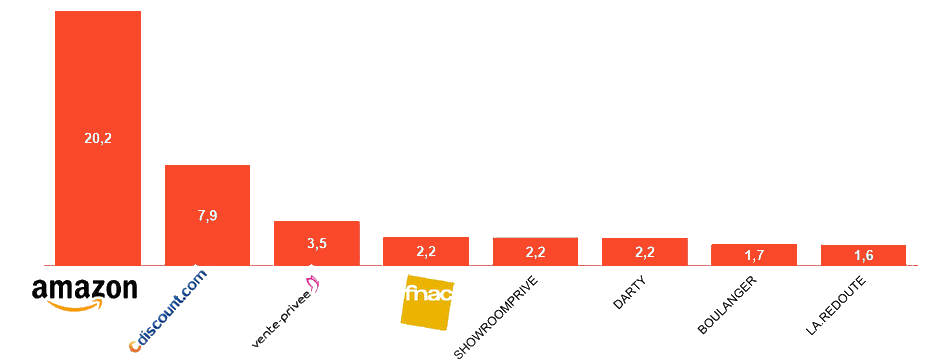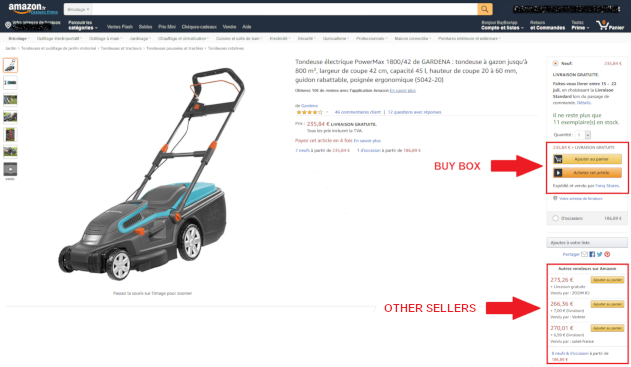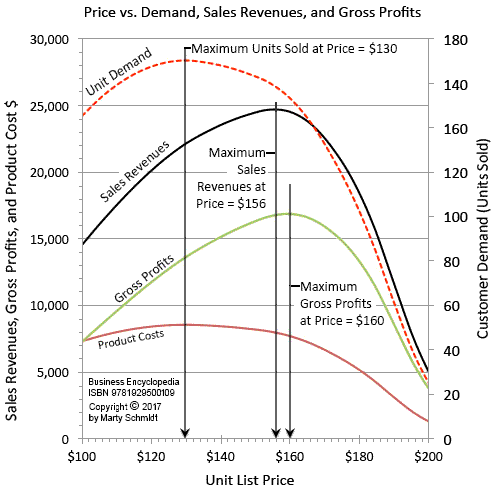At the end of 2019, Amazon had 34M unique visitors per month, compared to “only” 51M for Google. Cdiscount in third place with 22M. (source Médiamétrie)

So …
Marketplaces: Threat or Opportunity?
Threat for retailers
Let’s speak frankly. If you are a retailer, the marketplaces are your though competitors.
There’s no long-term interest for you to sell on the marketplaces EXCEPT in cases when you distribute your own products (distributer brands, Private Label) or when you do it for your exclusive suppliers.
But, be careful here: Amazon in particular won’t hesitate to contact your supplier directly if it becomes aware of significant interest of the customers for the product…
So, for you as a retailer, the best way to resist marketplaces and to counterattack will be to use a price monitoring solution combined with a dynamic, high-frequency repricing system, internal or external.
This will allow you to industrialize and execute your pricing strategy and to fight with the same weapons as your competitors. You can also rely on your other strengths (omni-channel if you have physical stores, B2B services, merchandising, development of your own marketplace…).
PAARLY offers you software solutions for price monitoring and repricing to help you with these subjects.
Opportunity for brands
If you are a brand, marketplaces are a great distribution channel for your products. 1 out of 2 French Internet users searches for information on a product or product range directly through the marketplaces.
The marketplaces can also be considered simply as traditional resellers. In fact, many of them offer to buy and resell your products directly. In case you are thinking about the collaboration, you might need to seek a professional advice, as there are many different ways of collaboration.
If you take a defensive approach to the marketplacesthe least to do is to understand which of your brand’s products are already present on the marketplace via third party vendors and to “clean” your distribution…
Because yes! You are often already present on the marketplaces via other fragmented players who sometimes don’t respect your product chart, selling your products at prices that are often aggressive and sometimes, selling them even via counterfeiters…
PAARLY has solutions to help you discover the distributors of your products (and competing alternatives), track the prices they charge and track down counterfeit products. Our consultants will also help you to defend your brand on the marketplaces (recovering ownership of your brand, creating a store, excluding counterfeiters from the marketplace, etc.).
If you take an offensive approach, a new world is open to you! As a brand, you’ll be able to distribute your products directly on the marketplaces, either by dispatching the products yourself or by storing them in the marketplace warehouses and profiting from their logistics services.
Funny thing is that your distributor network will thank you! Indeed, in certain cases (creation of your own store on the marketplace), this will enable you to manage your prices directly on the marketplaces and limit the parasitic effects of small players who would destock and damage the price image of your product.
What about the pricing strategy on the marketplace?
As you will understand, this section is only intended for brands or retailers who have their own or exclusive products and who have decided to sell their products under their own name.
For information, this solution is advised by PAARLY because it enables you to fix your prices on the marketplace and to keep control of your distribution in these environments. It might be relevant to combine a direct distribution with a distribution via the marketplace itself. An analysis by a consultant will enable you to understand it more clearly.
When you have your store on the marketplaces, there are 2 possible scenarios:
The battle of the Buy Box and the war of the repricing robots
Let’s imagine the following situation. You are selling your products and other retailers are selling the same products, too. It means, you compete with them for sales. Therefore, the automated repricing is highly recommended. In order to achieve maximum sales, it’s important to stand out from the crowd and be visible as a seller. It’s therefore necessary to win the “Buy Box” which corresponds to “add to basket” button. The seller who holds the Buy Box is more visible. It’s his product that will be put directly into the basket.
Note that 85% of sales are made via the Buy Box. Consumers are not necessarily aware of the presence of several sellers on the same product. Or they just simply don’t see them. The seller who is visible as the first one on the product page will win the sale.
Don’t think that the seller with the lowest price is always the one who wins the Buy Box. In reality, the attribution of the Buy Box is much more complex. The algorithms of Amazon or Cdiscount are, for example, a balance between
- competitive prices
- good seller evaluation
- excellent customer experience (delivery time, delivery method, …)

The best seller in all these criteria will win the Buy Box.
The winning strategy: change the price of your products up to 1 time every 2 minutes to beat the competing robots, recover these famous Buy Boxes and maximize your sales while preserving the price image of your products… and this is exactly what PAARLY’s solutions offer.
Injecting the AI (Artificial intelligence) into your repricing engine will allow you to implement bullish growth strategies when facing competing pricing strategies. The most commonly encountered strategies are simple price alignment strategies. The main problem with an alignment strategy is that it will only react to the market and the price movements of competitors. However, well-educated AI will be able to change proactively its prices to ” fix ” the competitors that follow you, to set your own price and become a “price maker” on the market. Like this, it will be able to influence directly and strongly competitors’ prices.
Price elasticity and pricing power
The second situation that may arise is a “monopoly” situation on the marketplace: you are the only one to offer the product. You’ll therefore (almost) systematically obtain the Buy Box as well as the sales made on this product on the marketplace.
The challenge here is to maximize the number of sales at the right price: pricing is obviously an essential lever.
Strategy 1: Determining the optimal price based on past transactions and test it
A classic strategy of approach by successive iterations will allow by regression to determine the optimum price point: Successive tests of different price points over homogeneous, representative and comparable periods will be associated with sales volumes. The regression will allow the “tracing” of the complete curve and thus the identification of the estimated optimum price point. This hypothesis can then be invalidated/validated by applying the price and sales results.

It’s important to know that the strategy of determining the price of a product by elasticity of demand doesn’t usually work in e-commerce if the same product is distributed on other sites with high visibility. Of course, in this case, the market price is an extremely strong marker and it will determine the price target of the optimal sales. Marketplaces are a very special and isolated environment and we can consider that a part of the customers are “captives” of the marketplace for at least two reasons.
First of all, more and more customers, used to marketplaces, will no longer challenge the prices of the marketplace on the web. Second reason is that the subscription strategies of the marketplaces (Cdiscount à volonté, Amazon Prime, etc.) will strongly encourage customers to order on the marketplace. This “captivity” of customers makes the elasticity approach valid.
Strategy 2: Determine a “willingness-to-pay” taking into account the prices of competitors and test your pricing power
Another interesting strategy to combine is the analysis of the price range of similar products of competing brands. Here, you will need a good price monitoring solution. It will allow you to discover the distribution of competing products and to analyze the price “spread” within the cluster of similar products. This spread will allow you to define which is the maximum price acceptable by the market for each of your products.
A pricing power strategy strategy can be tested to determine if a higher price of your product could be well perceived by customers and linked to a higher quality compared to other competing products.
At PAARLY, these 2 pricing strategies are automated, optimized and refined by AI.
In order to complete the pricing power concept, it’s also relevant to buy keywords directly on the marketplaces to make your products appear more favorably in the search results (like AdWords on Google).
This strategy will consolidate a premium positioning by a secret pricing power strategy within your product cluster.
Buying keywords on search terms will also allow you to increase your visibility and, of course, maximize your sales.
Here too, PAARLY has developed hybrid support based on the expertise of our e-commerce consultants combined with solutions for optimizing advertising bids via AI.
To sum up, the marketplaces represent a great opportunity to understand better your price positioning or the one of your competitors and to increase considerably your sales volume. They are also a great playground for validating ambitious price positioning. However, be careful to enter the jungle wisely and well equipped.
